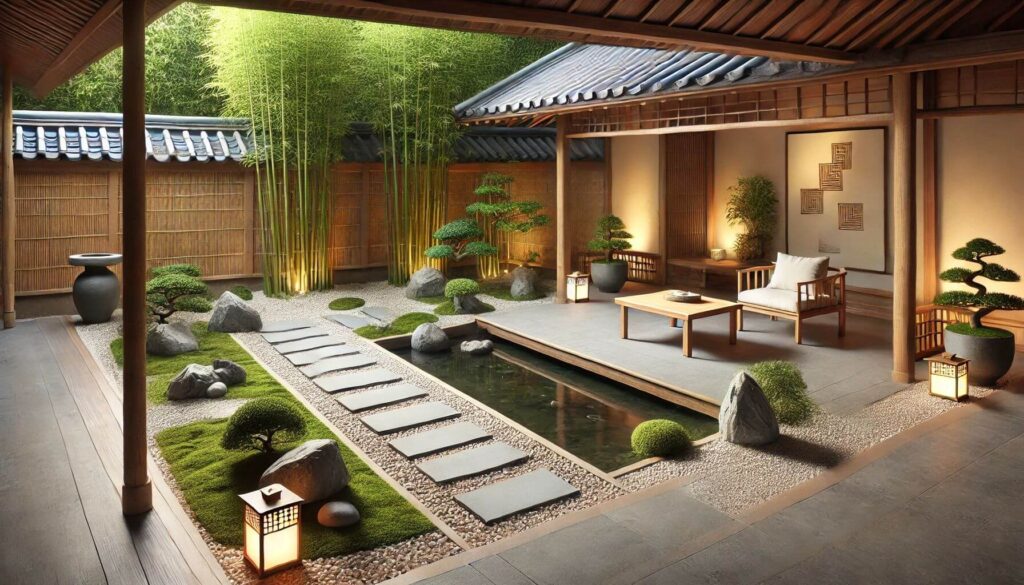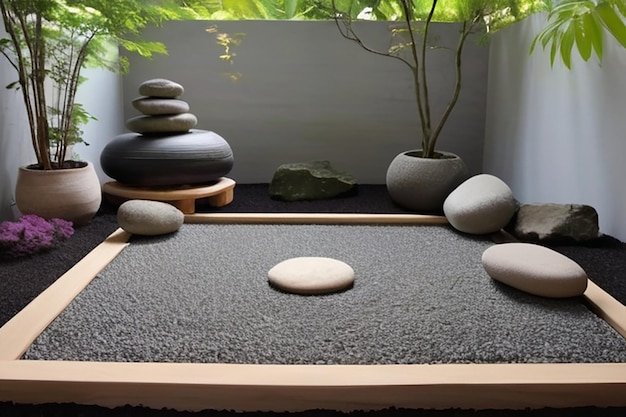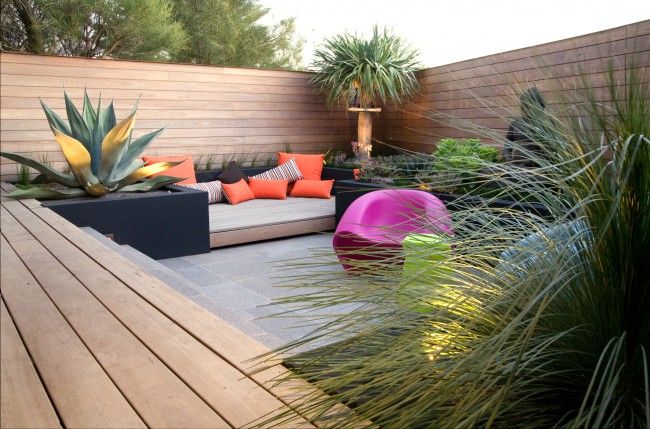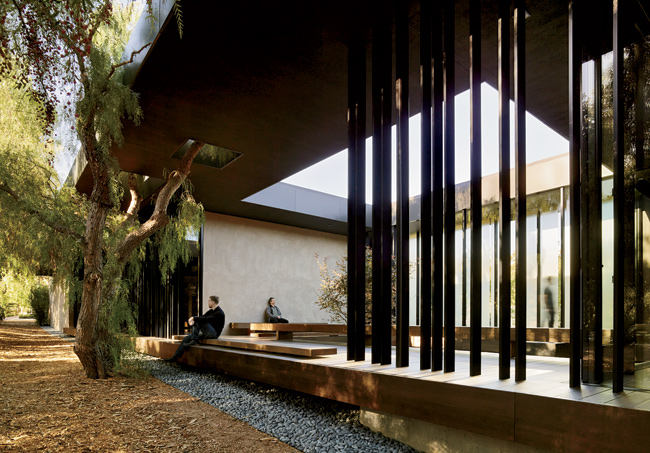
Crafting Serenity: Designing a Contemplative Outdoor Space for Mindful Living
In our increasingly fast-paced world, finding moments of peace and tranquility can feel like a luxury. The constant barrage of information, the demands of work, and the pressures of daily life can leave us feeling stressed, overwhelmed, and disconnected. Creating a contemplative outdoor space offers a sanctuary, a place where you can step away from the chaos and reconnect with yourself and the natural world. It’s about designing an environment that fosters mindfulness, encourages reflection, and promotes a sense of inner calm. More than just a pretty garden, it’s a personalized retreat designed to nourish your soul.
Why a Contemplative Outdoor Space Matters
The benefits of spending time in nature are well-documented. Studies have shown that exposure to natural environments can reduce stress hormones, lower blood pressure, improve mood, and enhance cognitive function. A contemplative outdoor space takes these benefits a step further by providing a dedicated area specifically designed to promote mindfulness and introspection. It’s a conscious effort to create a space that supports your mental and emotional well-being.
Think of it as your personal oasis, a place where you can escape the digital world and tune into the present moment. It’s a place to meditate, practice yoga, read a book, or simply sit in silence and observe the beauty of nature. It’s an investment in your overall health and happiness.
Key Elements of a Contemplative Outdoor Space
Designing a contemplative outdoor space is a deeply personal process. There’s no one-size-fits-all approach. However, there are several key elements that you should consider to create an environment that truly resonates with you and supports your intention. These elements include:
1. Defining Your Intention
Before you start planning your space, take some time to reflect on what you hope to achieve. What kind of atmosphere do you want to create? What activities do you envision yourself doing in the space? What emotions do you want to evoke? Are you looking for a place to meditate, practice yoga, read, write, or simply relax and enjoy the beauty of nature?
Your intention will guide your design choices, from the layout and materials to the plants and accessories. It will also help you stay focused and avoid getting overwhelmed by the endless possibilities. If you are looking for a place for meditation, you might need a flat surface and minimal distractions. For a reading nook, comfortable seating and shade are important.
2. Choosing the Right Location
The location of your contemplative outdoor space is crucial. Consider factors such as privacy, sunlight, noise levels, and proximity to your home. Ideally, you want a location that is relatively secluded and shielded from distractions. A quiet corner of your backyard, a secluded patio, or even a small balcony can be transformed into a peaceful retreat.
Think about the direction of the sun and how it will affect the space at different times of the day. Morning sun can be invigorating, while afternoon shade can provide a welcome respite from the heat. Also, consider the prevailing winds and how they might impact your comfort.
If noise is a concern, you can use natural barriers such as trees, shrubs, or a water feature to help dampen the sound. You can also add a fence or screen for added privacy.
3. Incorporating Natural Elements
Nature is the heart and soul of any contemplative outdoor space. Incorporate as many natural elements as possible to create a sense of connection and harmony. This could include plants, trees, rocks, water features, and natural materials such as wood and stone.
Choose plants that appeal to your senses and evoke feelings of peace and tranquility. Consider fragrant flowers, lush greenery, and plants with interesting textures. Native plants are a great option as they are well-suited to your local climate and require less maintenance. A small herb garden can also be a wonderful addition, providing both beauty and fragrance.
Water features, such as a small fountain or pond, can add a soothing and calming element to the space. The sound of running water can help to mask unwanted noise and create a sense of tranquility. Rocks and stones can also be used to create a natural and grounding effect.
4. Creating Comfortable Seating
Comfortable seating is essential for creating a space where you can relax and unwind. Choose seating that is both comfortable and aesthetically pleasing. Consider factors such as size, material, and style. A comfortable chair, a hammock, or even a simple bench can be a great addition to your contemplative outdoor space.
Add cushions and pillows for extra comfort and style. Choose fabrics that are durable and weather-resistant. Consider adding a throw blanket for cooler evenings. Position your seating to take advantage of the views and natural light.
5. Adding Sensory Elements
Engage all of your senses to create a truly immersive and contemplative experience. Consider incorporating elements that appeal to your sight, sound, smell, taste, and touch.
For sight, focus on creating a visually appealing environment with a variety of colors, textures, and shapes. Use plants, flowers, and decorative elements to create interest and beauty. For sound, consider adding a water feature, wind chimes, or even a small sound system to play calming music. For smell, incorporate fragrant plants such as lavender, rosemary, and jasmine. For taste, consider adding a small herb garden or a fruit tree. For touch, incorporate natural materials such as wood, stone, and soft fabrics.
6. Minimizing Distractions
One of the key goals of a contemplative outdoor space is to minimize distractions and create a sense of peace and tranquility. This means eliminating or reducing sources of noise, visual clutter, and other distractions. Turn off your phone, put away your laptop, and focus on being present in the moment.
Consider using natural barriers such as trees, shrubs, or a fence to block out unwanted noise and visual distractions. You can also add a screen or curtain for added privacy. Keep the space clean and organized to minimize visual clutter.
7. Personalizing Your Space
Your contemplative outdoor space should be a reflection of your personality and style. Add personal touches that make the space feel unique and special. This could include artwork, sculptures, personal mementos, or anything else that brings you joy and inspires you.
Consider adding items that have special meaning to you, such as a favorite book, a piece of jewelry, or a photograph. You can also add items that reflect your interests and hobbies, such as a yoga mat, a meditation cushion, or a sketchbook.
Design Ideas for Contemplative Outdoor Spaces
Here are some specific design ideas to inspire you:
The Zen Garden
Inspired by traditional Japanese gardens, a Zen garden is designed to promote meditation and contemplation. Key elements include carefully raked gravel, strategically placed rocks, and minimalist plantings. The goal is to create a sense of peace and harmony through simplicity and balance.
Consider using a variety of textures and shapes to create visual interest. You can also add a small water feature or a stone lantern for added ambiance. Keep the space clean and uncluttered to maintain a sense of tranquility.
The Meditation Garden
A meditation garden is designed to provide a peaceful and supportive environment for meditation practice. Key elements include comfortable seating, soft lighting, and calming sounds. The goal is to create a space where you can relax, focus, and connect with your inner self.
Consider adding a meditation cushion, a yoga mat, or a small altar. You can also add fragrant plants such as lavender and rosemary to enhance the sensory experience. Use soft, natural colors to create a calming atmosphere.
The Reading Nook
A reading nook is designed to provide a cozy and inviting space for reading and relaxation. Key elements include comfortable seating, good lighting, and a sense of privacy. The goal is to create a space where you can escape into a good book and forget about the world around you.
Consider adding a comfortable chair, a soft blanket, and a good reading lamp. You can also add a small table for your books and drinks. Use bookshelves or screens to create a sense of privacy and enclosure.
The Nature Sanctuary
A nature sanctuary is designed to create a sense of connection with the natural world. Key elements include a variety of plants, trees, and wildlife habitats. The goal is to create a space where you can observe, appreciate, and interact with nature.
Consider adding a bird feeder, a butterfly garden, or a small pond. You can also add a seating area where you can sit and observe the wildlife. Use native plants to attract local birds and insects.
Maintaining Your Contemplative Outdoor Space
Once you’ve created your contemplative outdoor space, it’s important to maintain it regularly to keep it looking its best. This includes tasks such as weeding, pruning, watering, and cleaning. Regular maintenance will not only keep your space looking beautiful but will also help to preserve its peaceful and calming atmosphere.
Schedule regular maintenance tasks and make them a part of your routine. This could include spending a few minutes each day weeding, watering, or tidying up. You can also hire a professional gardener to help with the more demanding tasks.
Consider using organic gardening practices to protect the environment and promote healthy plant growth. Avoid using harsh chemicals or pesticides, as these can be harmful to both your health and the environment.
The Ongoing Journey of Contemplation
Creating a contemplative outdoor space is not a one-time project; it’s an ongoing journey. As your needs and preferences change, you may want to make adjustments to your space to keep it aligned with your intentions. Be open to experimentation and don’t be afraid to try new things. The most important thing is to create a space that truly resonates with you and supports your well-being.
Remember that the goal of a contemplative outdoor space is not perfection, but rather to create a sanctuary where you can connect with yourself and the natural world. Embrace the imperfections and appreciate the beauty of the moment. Allow your space to evolve and grow along with you.
Beyond the Backyard: Expanding Contemplative Practices Outdoors
While designing a dedicated space in your backyard is ideal, contemplation can be woven into any outdoor experience. Even a simple walk in the park can become a mindful practice. The key is to engage your senses and be present in the moment.
Try these exercises:
- Mindful Walking: Pay attention to the sensation of your feet making contact with the ground. Notice the rhythm of your breath. Observe the sights, sounds, and smells around you.
- Nature Observation: Choose a single plant, tree, or animal and observe it closely. Notice its details, its movements, and its interactions with the environment.
- Sound Scape Meditation: Close your eyes and listen to the sounds around you. Identify each sound and notice its qualities. Allow the sounds to wash over you without judgment.
- Gratitude Walk: As you walk, think about the things you are grateful for in your life. Express your gratitude silently or aloud.
The Future of Contemplative Spaces: Embracing Sustainability and Technology
As we become more aware of the importance of sustainability and the impact of technology on our lives, the design of contemplative spaces will continue to evolve. We can expect to see more emphasis on using sustainable materials, incorporating eco-friendly practices, and integrating technology in a way that enhances, rather than detracts from, the contemplative experience.
Imagine solar-powered water features, smart lighting systems that adjust to your mood, and virtual reality experiences that transport you to faraway places. The possibilities are endless. However, it’s important to remember that the core purpose of a contemplative space is to foster mindfulness and connection. Technology should be used as a tool to support this purpose, not to replace it.
Conclusion: Your Personal Sanctuary Awaits
Designing a contemplative outdoor space is an investment in your well-being and a gift to yourself. It’s a place where you can escape the stresses of modern life, reconnect with nature, and cultivate a sense of inner peace. Whether you have a sprawling backyard or a small balcony, you can create a personalized retreat that nourishes your soul and supports your journey towards mindfulness.
Start by defining your intention, choosing the right location, and incorporating natural elements. Add comfortable seating, sensory elements, and personal touches that make the space feel unique and special. Minimize distractions and maintain your space regularly to keep it looking its best.
Remember that the journey of contemplation is an ongoing process. Be open to experimentation and allow your space to evolve along with you. Your personal sanctuary awaits.



